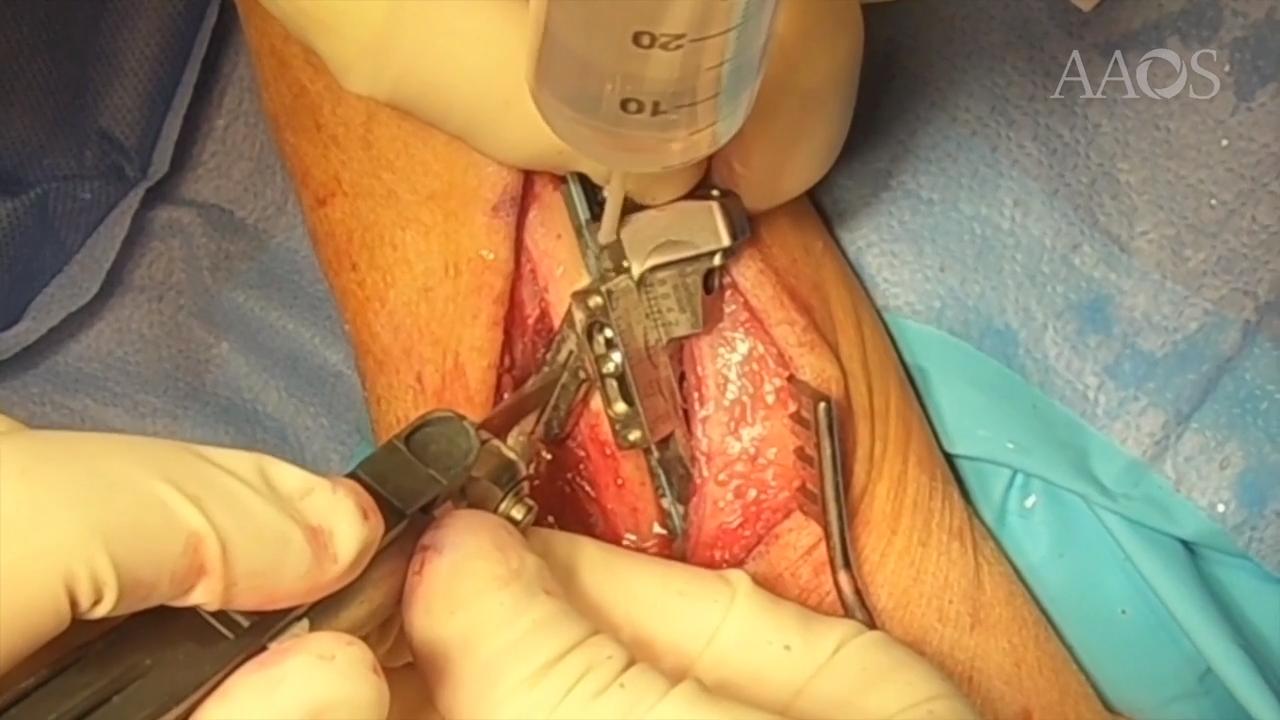Ulnar Shortening Osteotomy for Ulnar Sided Wrist Pain
Case Overview
This video discusses the case presentation of a 61-year-old woman with ulnar sided wrist pain from ulnar impaction syndrome.
Method/Technique
A 9-cm incision is made 3 cm proximal to the ulnar styloid. The fascia between the flexor carpi ulnaris and the extensor carpi ulnaris is incised. Tissue is subperiosteally elevated off the ulna. A 2.5-mm plate with an osteotomy jig is inserted. A 2.5-mm cortical screw is drilled distally to compress the plate to the bone. Next, a core hole is drilled through the proximal portion of the oblong hole to allow for up to 8 mm of compression. A temporary tension bolt is placed, securing the drill guide to the plate and the bone and allowing for force transmission during compression. The first osteotomy cut is made at the desired angle, and the jig set to the desired cut length. The osteotomy is completed, and the bone wafer is removed. The tension bolt and proximal screw are loosened. After ensuring no soft-tissue interposition is present at the osteotomy site, the tension device facilitates closure of the osteotomy gap. Next, a 2.5-mm lag screw is placed perpendicular to the osteotomy site. The proximal screws are re-tightened, and the remaining holes are filled. The tension bolt is removed, and the remaining holes are filled. Final radiographs revealed adequate compression and an ulnar-negative wrist.
Results
A retrospective study of 30 wrists with ulnar impaction syndrome in which an ulnar shortening osteotomy was performed revealed good to excellent long-term results in 28 of the wrists. Summary An ulnar shortening osteotomy is a technically simple option for the management of ulnar impaction syndrome.
